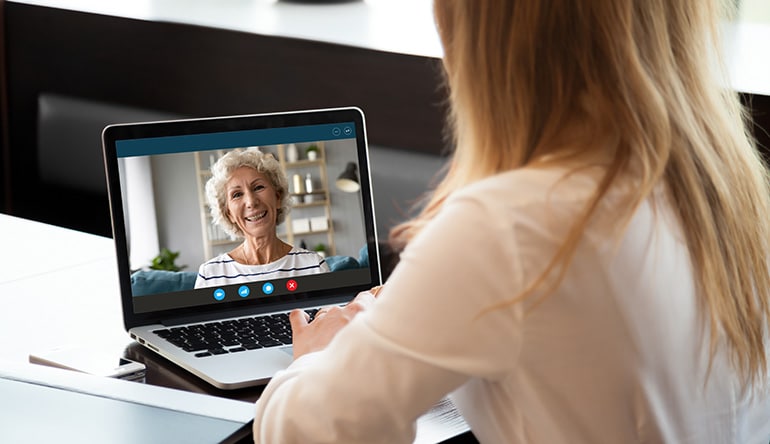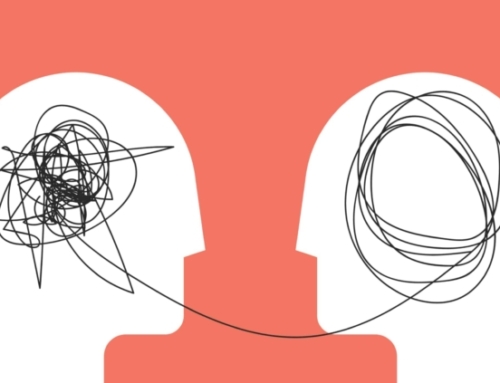Teletherapeutic Alliance is my term for establishing a therapeutic alliance with patients through the medium of telemedicine videoconferencing. One thing I’ve learned over my years of “living” online (including especially now during the coronavirus pandemic when the majority of my interactions occur through teleconferencing) is that we humans are such hypersocial creatures that we can bond over any medium. So, my foundational belief about telepsychiatry is that is a highly effective interactive medium and is accepted or even preferred by many clinicians and patients.
Having said that, the ways of interacting through telepsychiatry videoconferencing calls can either strengthen or weaken the therapeutic alliance. Most of these ways of interacting are not unique to telepsychiatry and occur in person-to-person clinician-patient interactions. However, given the lack of in-person interaction, when teleconferencing, special attention should be paid to ensure the clinician-patient interaction is as positive as it can be within the constraints.
Therapeutic Alliance
First, I define therapeutic alliance (TA). One “pan-theoretical” TA construct, that is, one that applies to all psychotherapies and psychiatric treatment in general, was developed by Bordin (1979). Its three factors are the need of the clinician and patient to:
- Agree on the goals of treatment
- Agree on the tasks of treatment
- Form a personal bond based on reciprocal positive feelings
One can extrapolate the prerequisites to and consequences that flow from attainment of these three factors.
- First, for the clinician and patient to agree on the goals and tasks of the treatment requires that the clinician guides the patient to formulate their goals. Initially, these goals may be inchoate or, when clear, may be limited to simply being rid of the depression, anxiety, or whatever is the proximal reason for seeking treatment, but without clarity of the preferred life would be like.
- Second, the clinician needs to educate the patient on the details of the treatment and how it relates to reaching the patient’s goals, that is, the treatment’s mechanisms of action. The more the patient understands the nature of their problem, their goals, and the tasks required to reach them, the greater the chance of the patient will adhere to task completion throughout the course of treatment.
- Third, for a bond to form between patient and clinician, the patient must believe that the clinician is competent enough and cares enough to collaborate with the patient to bring about the desired goals. Competence and caring are communicated through every interaction. Every clinician question, request, or response can convey a surety of knowledge and skill (communicating that the clinician has a well-established system for diagnosing and helping resolve the patient’s problems and achieving their goals) and caring (communicating that the clinician is invested enough to see the treatment through to the end despite difficulties and setbacks).
- Fourth, as hypersocial creatures, our sense of self-worth, motivation, sense of agency, and optimism in a positive outcome are heavily dependent of what others believe about us as communicated through their verbal and nonverbal actions. If I believe that someone finds me worthy and respects and believes in me, I am more likely to believe those things about myself. (Some sociologists call this the “looking glass” self, as in we reflect like a mirror what other’s think and believe about us, a topic I’ll cover another time.)
Teletherapeutic Alliance
With this as background I now segue into how to establish that personal empathic bond with a patient when interacting through the teleconferencing medium, one in which the video image and the sound of the participants is shared.
Eye Contact: We humans have evolved to be exquisitely sensitive to the environment, to the opportunities and threats it affords us. And we are especially attuned to other human beings since they are a main source of the opportunities and threats that confront us. And, more specifically, we are most attuned to faces since this is the main “expression center” of a person’s emotions and likely next actions. And, even more specifically, we are attuned to a person’s eyes. Another person’s eyes are probably the most important source of information we can gather from the environment. It communicates whether we face a potential friend, lover, foe, or a person not in the least bit interested in us. Given the centrality of eye-contact, the most effective way of establishing rapport is first, by maintaining eye contact with the person your speaking to and second, by conveying a look of interest, positive regard, and compassionate equanimity.
Eye Contact When Teleconferencing: Here is a subtle but I believe crucial shortcoming of most teleconferencing equipment: when we look at our screen at the person’s face, they observe us as not looking at them. On both a computer videocam and a smartphone camera, the camera ‘eye’ is displaced from the person’s eyes. This interferes with our evolved need to be looking into another person’s eyes to fully bond with them.
This displacement may seem subtle, but if the interaction were happening person-to-person with two people seated facing each other, the way you look at your patient on a smartphone would be equivalent to looking a foot or two above or to the side of them.
So, as the clinician it is up to you to rectify this displacement. When teleconferencing, look into your camera, rather than into your patient’s eyes as seen on the screen. It feels strange and unsatisfying to look away from the image and into the camera, but it recreates for the patient the experiencing of you looking into their eyes.
Attending to Patient’s Expressions, Demeanor, and Posture: When in person, it seems natural to comment on and ask about your patient’s state of mind or emotional state as expressed through their facial emotions, demeanor, and posture when called for. On teleconferencing, as clinicians we may feel less sure about commenting on or asking about these aspects we observe. But, given the resolution of the image and sound, there is no technical reason that we can’t do so. We have adequate information about which we can comment and, when appropriate we can bring them to patient’s attention.
Establishing Telepsychiatry Session Ground Rules: When patients journey to the clinic to meet with us, they have a certain frame of understanding for the interaction: patients are in a “medical appointment” mode and act accordingly. Now, with teleconferencing, patients are more likely to have a different frame of understanding. Now they are in a “social media” mode, which is a much more informal one. As Dr. Lucia Cheng pointed out in a recent webinar on running a telepsychiatry practice, she has had to tell patients that they can’t have a session with her while they’re driving, especially with a bunch of kids in the back. Other examples of behaviors not conducive to a serious psychiatric appointment include the patient waiting in line in a store and speaking about their personal matters while surrounded by strangers; multi-tasking, such as making dinner or packing the kids off to school; being dressed (or undressed) inappropriately; and being in a space that is filled with noise and people coming in and out.
Given the likelihood of these behaviors occurring, it is probably worthwhile for the clinician to set the session ground rules at the very start of treatment. Because the clinician is likely to remain in “medical appointment” mode, if the patient enters “social media” mode during a tele-session, a therapeutic rupture can occur, one that leaves the clinician feeling underappreciated and disrespected, and the patient likely to fail. After all, engaging in psychiatric treatment requires attentive focus and not one competing with various distractions. A certain etiquette is required.
I mentioned the concept of therapeutic rupture in this last paragraph. I’ll pick up on this concept in the next LifeBrief. Thanks and take care.
Dr. Jack
LanguageBrief
“We try to hide our feelings but forget that our eyes can speak.” – Anonymous
“Connecting with someone is not necessarily a bond with a significant other, or even a friend, but can be the indefinable – perhaps the rarest and most precious thing in life to find at all.” – Donna Lynn Hope
“Everything that irritates us about others can lead us to an understanding of ourselves.” – Carl Gustav Jung
“Nothing in life is to be feared, it is only to be understood. Now is the time to understand more, so that we may fear less.” – Marie Curie Sklodowska
“To perceive is to suffer.” – Aristotle







Leave A Comment